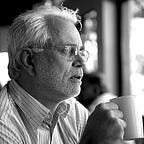Lost Arthur Godfrey ‘Doomsday Broadcast’ the Holy Grail of cultural archaeology
In 1953, as the cold war with the Soviets began heating up, President Dwight D. Eisenhower enlisted a friend, Arthur Godfrey, to make a film to tell survivors of thermonuclear war that don’t worry, everything was going to be okay.
Now, if we could just find the damn thing …
U.S. government paranoia of almost everything was reaching a zenith in 1953. Procedures for dealing with hostile takeovers by Soviets, communists, homosexuals, even space aliens were underway by various intelligence agencies and departments, including the FBI, CIA and the NSA.
The fear of nuclear war with the Soviet Union was especially acute. The Atomic Energy Commission (AEC)under Harold Boeschenstein began creating various creative ventures to inform Americans about the effects of nuclear war and how to deal with this new reality. One such creation was “Bert the Turtle,” a cartoon that wore a civil defense helmet and reminded us there were two kinds of attack: with warning and without any warning, just as he advised us to “duck and cover.”
None of these did squat to protect Americans from the devastating effects of nuclear war, but it did create a perception of safety that had almost no basis in reality.
While Bert the Turtle was created to prepare Americans before and while the bombs fell, the AEC realized there were no instructions to assist Americans after such a confrontation, when the world was a wintery, smoldering ruin. So, in an effort to pacify bewildered U.S. citizens, President Eisenhower asked Boeschenstein to create PSA films to show on television channel 2 or in theaters (that were miraculously still functional) via the Emergency Broadcast System (EBS) only after the devastating effects of total nuclear annihilation. The main purpose of the film was to calm survivors and reassure them that their government was functional and that life would quickly return to normal.
According to an interview with former CBS president Frank Stanton obtained by the website CONELRAD in 2004, Eisenhower chose Edward R. Murrow and Eisenhower’s close friend Arthur Godfrey to host this film. In addition to being a close friend of the president, Godfrey had two TV shows and a radio show at the time, and was one of the most trusted men in America. In addition, to help relax traumatized survivors who somehow may be watching, well-known newsman Murrow and other journalists agreed to accompany elected leaders in retreat to Mount Weather, The Greenbrier in West Virginia and Culpeper, Virginia to lend familiarity in other broadcasts or reporting on the situation.
Edward R. Murrow was a confirmed addition to this effort. In a March 2, 1953 Time magazine story headlined “Recognition Value,” Godfrey admitted he had informed his radio audience in February, 1953 that he and Murrow had been chosen to appear in a post-atomic attack news broadcast. “They chose us two because it’s pretty tough for guys to imitate our voices. You’d know when you heard my voice or Ed Murrow’s voice that these were two guys you could depend on, and nobody was giving you any applesauce, see? That’s the reason . . .”
Godfrey also mentioned his and Murrow’s role in 1981 in an (unaired) interview with New York’s WNET-TV. The transcript of this interview was excerpted in Arthur Singer’s biography “Arthur Godfrey: The Adventures of an American Broadcaster” (McFarland Publishing, North Carolina, 2000):
It was thought by the Eisenhower administration that two voices were well-known and trusted, and it was pretty tough to imitate us. One was Edward R. Murrow, who had become much beloved during World War II for his broadcasting from London…and the other was Godfrey. And it was a great honor for me to be considered on the same level with Ed.
In addition to reassuring survivors, the Doomsday Broadcast presumably would inform survivors that “Plan D” — the initiative for nuclear attack response that required no formal congressional declaration of war — had been implemented, and the Russians also were being bombed back to the Mesozoic era. Another purpose was to explain how the government was going to work to improve quality of life on the dead moonscape once known as earth through such drastic measures as martial law, food and water rationing.
Then the film seemed to vanish. No one outside of the strictest government secrecy protocols has ever seen the Arthur Godfrey Doomsday Broadcast. In fact, its mere existence is speculative, and some still dismiss it as urban rumor. However, a public resurrection of the existence of the broadcast was made by a writer named Ted Gup in the August 10, 1992 issue of Time magazine:
The [Mount Weather] television studio is prepared to provide the President — or his successor — a national audience over the Emergency Broadcast System. Throughout the Eisenhower Administration — and for years after — a vault held tape-recorded addresses by both Eisenhower and celebrity Arthur Godfrey. The prerecorded message was concise: The country has come under nuclear attack, but the government continues to function.
After the publication of this article, Bill Geerhart contacted Gup, who unfortunately said that he no longer had his notes regarding the story. In 2004, however, Geerhart confirmed with former CBS President and former Eisenhower aide Frank Stanton that Arthur Godfrey had indeed recorded the message in 1953.
Unfortunately, many documents of the cold war remain sealed under court order to this day. While production of the Arthur Godfrey Doomsday Broadcast seems to be confirmed, no one can verify or claim a copy of it. FOIA requests come up empty. So, locating a copy of the famed broadcast would truly be a cultural archaeologist’s dream.
Read more at www.dalebrumfield.net
